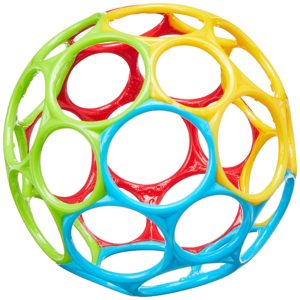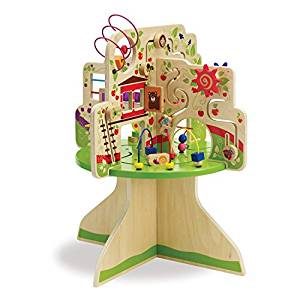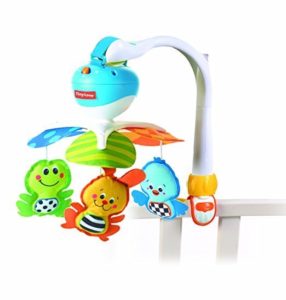Updated June, 2021
Feeding your baby in their first year of life has a lot of pressure around it. After 6 months of purely formula or breast milk, it is time introduce your baby to solids. Now this doesn’t mean six months hits and bam you’re giving Junior steak. You want to watch your child for signs of readiness and work them up slowly and patiently to more difficult foods. In this blog we discuss what signs of readiness are, what to feed your little one, and ways to avoid raising the dreaded picky eater.

Signs of Readiness
Before even discussing if your child’s belly and mouth are ready for solids, let’s talk about physical development. They should have solid head control and be able to sit up on their own in whatever chair is appropriate for you. If they can’t manage their large physical bodies, we can’t expect them to manage things like fingers and tongues.
Your baby will start showing they are ready for food in a number of ways. First off, babies have a tongue thrusting reflex that helps them suckle at the breast. If this reflex is still very strong, baby will push anything you put in their mouth on a spoon right out. This is how you end up with all that baby food on their clothes instead of on them. If your baby instantly pushes all food out of their mouth with their tongue, they likely aren’t ready for solids yet and you may want to try again in a month or two.
Once the tongue thrust reflex fades away, now you want to watch for signs of interest from your child. One obvious sign will be them watching you as you eat. They understand that you are putting food in your mouth and they may want to try it too. As their interest grows, they may even start to reach for your food themselves, either off your spoon or even right off your plate.
Once they show they are really ready, you can start offering them different foods. Don’t rush into feeding your child solids though. I promise, they will eat them eventually and it is much better to give them the time to develop the skills they need to be successful.

What to Feed (and Not!)
Step 1: Mushy Foods
There are two models of feeding babies I am going to highlight here. The first, and most common model, is the baby food model. The second model, Baby Fed Weaning, is its own model and you can find a detailed blog about it here. While I will touch briefly on baby led weaning here, the focus in this blog is purees and the stages of solid eating.
When I say baby food, I mean fruits, vegetables, and sometimes even meats in a pureed form. You can purchase this from most grocery stores at a reasonable price. Gerber is a very popular brand that I grew up with. These can come in little glass jars, little plastic jars, or even pouches.
If you aren’t sure you want to go the store bought route, you can also make your own baby food. This will primarily be fruits and vegetables. Fruits smoosh up pretty easily and can often be prepared on the spot. Many of your vegetables will need to be boiled and mashed first. I personally went this route with nothing fancier than a pot for water, some vegetables, and some 2-4 ounce canning jars. I know a lot of moms swear by the Nutribullet though. As I’ve mentioned before, I personally prefer to be thrifty, but the Nutribullet is a nice, sort of official little tool for making and storing home made baby food.
The completely separate route, baby led weaning, skips this puree stage completely. Instead of offering baby food exclusively, some parents offer their children soft adult foods. Monster’s first food was a strawberry and they loved it. Other easy first foods are things like avocado, banana, and mashed potatoes. Some mashed forms of whatever you are eating are often offered to the child, along with finger foods. This approach only works if you are sure that your child is ready for solids.
Step 2: Soft and Small
After your small human starts getting the hang of eating all those mushy foods, you can start giving them other soft foods. This is often when baby cereal, typically rice or oatmeal, and other finger foods such as cheerios get introduced. Do keep in mind that while baby cereal and cheerios are common, they don’t come with a whole lot of nutrients. This means the majority of your baby’s nutritional needs will still be met through nursing or formula.
I think of this phase of eating as practice more than anything. Let your little human practice using a small spoon or fork. Give them plenty of time and space to make a mess, make mistakes, and to eat at their own pace. The pincer grasp, using the thumb and forefinger together to pick things up, is important to develop and this can be at this stage. An easy way to practice this grasp is by offering small bites of finger foods, like cheerios. Your child will start out scraping with their whole hand, trying to grab everything at once. Given time and space they will start to use the pincer grasp.
Step 3: Finger Foods
Finally, as teeth really start coming in and they have a lot of practice with feeding themselves, mushing food, and swallowing, you can expand your child’s food options significantly. This is where you often start offering bits of what you are already eating. These pieces of food should be small and relatively easy to chew. Before you know it, your child is eating everything you are eating.
Food Cautions
I tend to believe you should feed your child anything they want. This does come with some exceptions though. If you ask the internet, you can find a nice long list of foods you shouldn’t feed your baby for this reason or another. My list is just two very important items: honey and cow’s milk.
Honey can contain a bacterium that causes botulism. While adults generally are not affected by the amount found in honey, it can make a baby under one very sick.I was possibly overly cautious, all the way to not feeding my child Honey Nut Cheerios. I don’t know if that extent of caution was necessary, but I wasn’t about to find out the hard way.
As for milk, the nutrients in cow’s milk are inadequate for a growing baby and can be very difficult for them to digest. Their stomachs are also incredibly small. You don’t want to fill up their tummies on milk that isn’t good for them and doesn’t provide adequate nutrients. All beverages before one should be either formula or breast milk.
It is wise to also avoid sugar sweets, such as ice cream or candy bars. Our society has enough of a sugar addiction as it is. I don’t see any compelling reason to start your child on junk food at such an early age. I also would highly advocate for avoiding juice completely, and if offered watering it down significantly. Those foods aren’t dangerous to your child under one, but they lack nutrition. Food should be about helping the body grow and junk food will fill up your baby without offering them any nutrients.

Avoiding a Picky Eater
No parent wants their child to be a picky eater. The constant battles at the table and the ongoing concern that your child is going to starve is exhausting. Plus, without food in them, children tend to get grumpy, do not function as well, and can struggle to perform academically or learn. So how do you avoid the picky eater?
The first is to know that it is very normal for toddlers to go through stages. They might love steak and want nothing but steak for two weeks straight. Then, suddenly, as if a switch has been thrown, they won’t touch it anymore. This is very normal and nothing to worry about. Just like adults, children go through phases of really liking certain foods. Be prepared for these changes and have a back up plan.
Make meals a pleasant time. Offer some routine by sitting around the table together. Practice patience by having your child wait until everyone can sit down (within reason). Sing a song or say a prayer or do some sort of activity right before eating every day. You can change the activity depending on the meal. Monster asks for three songs at each meal, which we all sing together, and then we can eat.
Once you are eating, try to enjoy yourselves. Don’t stress about what or how much your child is eating. If they are hungry, they will eat. Put everything available for the meal on their plate, but don’t require them to eat it. Studies have shown that children have to experience a new food as many as 15 times before they will even try it. That means that even just exposing your child to new foods can set them up for eating in the future.
Finally, avoid the snacks. Not completely, many children needs snacks throughout the day. But if dinner is at 6:30, don’t let them fill up on snacks at 5:30. Space out meals, offer healthy, light snacks, and occasionally tell your child no. They won’t eat anything if they can have gummies instead.















